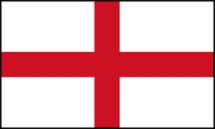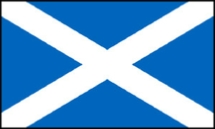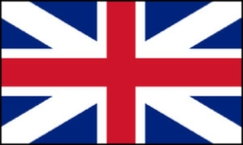


xxxxxThe union between England and Scotland was given royal assent in May 1707. The two countries had been under the same monarch since the accession of James I in 1603 (J1), but attempts at a closer union had been prevented by suspicion and old antagonisms. By 1706, however, during the lengthy war with France, the Scots posed a constant threat to England’s security, whilst the Scots themselves were anxious to have a share in England’s growing prosperity and the advantages which went with free trade. Under the terms of the union, Scotland, as part of Great Britain, was represented at Westminster, and administered nationally, but it retained its own legal system and Church. But opposition to the union remained in Scotland, as we shall see in the Jacobite Rebellion of 1715 (G1).

 xxxxxThe union between England and Scotland was given royal assent in May 1707. As we have seen, the two countries had been under the same monarch since the accession of James I (then James VI of Scotland) in 1603 (J1). After the Glorious Revolution of 1688, and during the years 1702 and 1703, attempts were made to bring about a closer union, but suspicion and old antagonisms died hard. By 1706, however, statesmen on both sides of the border were coming to realise that the unity of the two countries was a matter of some urgency. The lengthy and extensive war with France, which had continued unabated from the reign of William and Mary, posed a serious threat to England’s internal security. Scotland had in the past and could in the future give support to French invasion plans, whilst the Jacobite cause -
xxxxxThe union between England and Scotland was given royal assent in May 1707. As we have seen, the two countries had been under the same monarch since the accession of James I (then James VI of Scotland) in 1603 (J1). After the Glorious Revolution of 1688, and during the years 1702 and 1703, attempts were made to bring about a closer union, but suspicion and old antagonisms died hard. By 1706, however, statesmen on both sides of the border were coming to realise that the unity of the two countries was a matter of some urgency. The lengthy and extensive war with France, which had continued unabated from the reign of William and Mary, posed a serious threat to England’s internal security. Scotland had in the past and could in the future give support to French invasion plans, whilst the Jacobite cause -
 xxxxxThus, despite earlier reservations by the Scottish Parliament, the commissioners, appointed by Queen Anne to discuss the possibility of a union, made rapid progress. Within three months they had put together the major clauses of a treaty. By July 1706 -
xxxxxThus, despite earlier reservations by the Scottish Parliament, the commissioners, appointed by Queen Anne to discuss the possibility of a union, made rapid progress. Within three months they had put together the major clauses of a treaty. By July 1706 -
xxxxxThus after May 1707, under its title Great Britain, the island had a single parliament and a unified system of national administration, including taxation, administered from the nation’s capital, London. The Scottish parliament voted itself out of existence, but Scotland retained its legal system and its Church. In essence, England gained strategically, and Scotland gained economically. This said, the union, like the Glorious Revolution of 1688, was fiercely opposed by many of the Highland Scots. There was to be no lack of support from that quarter with the coming of the Jacobite rebellion in 1715 (G1).

xxxxxAs we shall see, the Act of Union of 1801 (G3b) brought Ireland into the Union, and the flag of St. Patrick completed the so-
THE ACT OF UNION UNITES ENGLAND AND SCOTLAND 1707 (AN)
AN-


